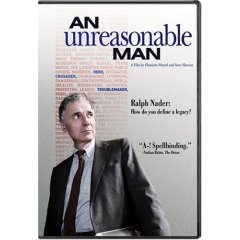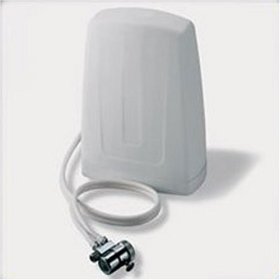Water Boy
It’s been years and years since I heard the sports epithet “water boy.” As pre-pubescent football players, we used to laugh at the kid who stood by the bench handing out cups of water—and underneath it all was the assumption that getting water is something we take for granted. Now, years and years later I’d be proud to be a water boy.
Anil Dash sets the scene in “Bottled Water Is Still A Scam” but one alternative is missing from this unexpected post (my assumption is that Anil Dash intends to be mainstream tech so complaining about water may put off “fans”). The alternative to bottled water is the water filter—and it would have been interesting to read about what Anil thinks of them.
 My active research began before December 2006 (according to my del.icio.us bookmarks) with this chart comparing Aquasana, Amway, Culligan, Kenmore, GE, Ever Pure, Aqua-Pure, PUR, Brita, Brita brands. The ‘challenge’ is deciding who is lying and making a decision to take action:
My active research began before December 2006 (according to my del.icio.us bookmarks) with this chart comparing Aquasana, Amway, Culligan, Kenmore, GE, Ever Pure, Aqua-Pure, PUR, Brita, Brita brands. The ‘challenge’ is deciding who is lying and making a decision to take action:
- Is Ralph Nader’s comments about cancer-causing water out of date (from the 1970s, his “Safe Drinking Water Act” days) and are misused by water filter companies?
- Even though the government declares my water “safe” at the reservoir, by the time it travels through the city terrain and the pipes of my apartment building is it still safe?
- Is water testing for “private citizens” a waste of time?
- Should I trust all these people at Amazon.com saying that Aquasana filter falls apart too easily?
 Now let’s add in a theory of relativity: the water in Decatur, Georgia tasted great from the tap the last time I checked (over ten years ago). Anil Dash might live in a luxury apartment building in New York that is so excellent, the water is filtered somewhere in the basement. Here in Los Angeles, California, the home of a Chevron refinery and decades of aerospace skunk works (and sewage spills), we have to seriously consider Benzene, TCE and MTBE removal. This is why my eye looks toward the Aquasana line of filtration systems over, say the cheaper PUR filters. The cheaper filters are for people who don’t like the taste of chlorine, who trust their public water source and are unwilling to pay for bottled water.
Now let’s add in a theory of relativity: the water in Decatur, Georgia tasted great from the tap the last time I checked (over ten years ago). Anil Dash might live in a luxury apartment building in New York that is so excellent, the water is filtered somewhere in the basement. Here in Los Angeles, California, the home of a Chevron refinery and decades of aerospace skunk works (and sewage spills), we have to seriously consider Benzene, TCE and MTBE removal. This is why my eye looks toward the Aquasana line of filtration systems over, say the cheaper PUR filters. The cheaper filters are for people who don’t like the taste of chlorine, who trust their public water source and are unwilling to pay for bottled water.
The greatest complaint against water filters (besides some of them being overpriced and fake) is that they are slow (sometimes they just drip because of tiny rocks in the water pipes, requiring a “pre filter”). This means you have to plan the preparation and storage of water (buy glass containers). Most people in Africa have to “fetch water” all the time so to complain about waiting for water from a source that’s a few feet from me is wickedly whack. This essentially means that you have to develop your own water bottling plant in your home. You can do this yourself—or pay someone else who is essentially doing the same thing (most bottled water comes from the domestic/foreign tap). My water filtration plant is not yet up and running but at least now I know that my continued use of bottled water is a clearly defined luxury. Anil Dash would call it a stupid luxury.
The danger of bringing water filtration chores into your life is real. Consider this from the Aquasana web site:
Carbon is the building block of life, and will allow bacteria to colonize on its surface as soon as it gets wet. Unlike the AQ-4100 and EQ-300 which use KDF-55 (55% copper, 45% zinc), the AQ-4000 does not contain anything to inhibit bacteria growth. We no longer use KDF-55 in drinking water filters because high levels of copper are not good for the brain. Some companies use silver to prevent bacteria build-up, but recent studies have shown that silver has similar health effects to lead. Silver collects in the left testicle or the left ovary and can cause hypertension, brain damage, and other negative health effects. Companies that use silver in their cartridges must register their products with the FDA as a pesticide. Because there is nothing toxic in our cartridges to prevent bacteria growth, the AQ-4000 will reach detectable levels of heterotrophic bacteria after 7–8 months, and dangerous levels after 12–14 months. To prevent bacteria build-up, the AQ-4000’s cartridges should be changed every 6 months, regardless of use.
What this essentially means to me is that a water filtration system is like laboratory equipment and should be treated as such. An Aquasana replacement filter is, as of this writing, about US $60. There is a “Water 4 Life” program that takes about US $10 from this bi-annual cost.

Comments
Anil, 2007-07-16 17:45:29
I think water filters are a great idea, though we just use a simple Brita pitcher in the fridge. As far as the intended audience for my blog, I've been blogging for about 8 years, and back then we didn't have to pick just one topic to blog about, so I wouldn't say I write about tech any more than I write about pop culture or anything else.
"Anil Dash might live in a luxury apartment building in New York that is so excellent, the water is filtered somewhere in the basement."
Or I might live in a hut in the middle of Central Park! I don't understand the point of making stuff up, when you can just ask. For what it's worth, I live in a regular one bedroom on the ground floor of a walk-up; I make my team of manservants carry me around it, though, so I don't have to walk too far to get my fresh, clean drinking water.
rasx(), 2007-07-16 19:15:02
Since you were generous enough to answer my implied question, consider yourself asked! I would assume that only a luxury hotel would filter their water on such a massive scale. Changing water filters periodically would be expensive!